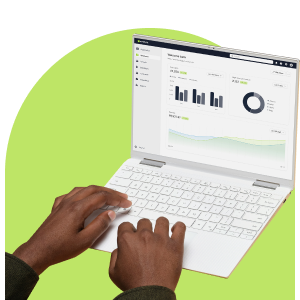List segmentation is likely not the first approach that springs to mind when you’re looking for more effective ways to connect with your audience. Still, this unassuming strategy is where the real power of effective message personalisation can be seen. List segmentation, in short, means using the data you already have at your disposal to include or exclude recipients from your database even before you start building your email. Let’s take a closer look at three effective list segmentation tactics used in popular bulk email platforms like Everlytic.
1. Data Fields & Custom Filtering
Standard contact fields can be helpful to subdivide your recipient base effectively prior to sending and it’s generally easy to compliantly get hold of this type of data. You can take this approach even further with custom fields and filters, where you create bespoke data fields that you can use to segment your list in an almost unlimited number of ways.
Let’s imagine you’re hosting an industry roadshow with several on-site events and webinars. By creating a custom field and filter for event attendance, you can send segmented messaging depending on which event (on- or off-line) your recipients will be attending.
Platforms like Everlytic allow you to segment a list using the following data field types as input:
- List Properties: Exclude or include contacts in a send depending on the list or database they’re in.
- Geolocation: A contact’s region or city of residence is a powerful, non-invasive data source for segmentation.
- Custom Fields: These bespoke data fields can contain an unlimited number of different data types – providing you with rich filtering opportunities.
- Basic Contact Fields: Don’t forget that you can always filter with the stock standard data fields provided by contacts when signing up to your list. Simple segmentation can be better in some cases.
- Additional Fields: If you need to drill a bit deeper, consider segmenting by additional contact fields like birth date, physical address, company, or job title.

2. Standard & Interest-Based Tagging
Standard and interest-based tags are great for hyper-personalising email campaigns via segmentation, since you can narrow your audience down to a pinpoint of super engaged individuals in their respective niche areas. The advantages of using tags for filtering rather than standard data and custom fields include:
- Ease of Loading: Since you don’t have to create multiple data fields for contact tags in your list imports, they’re super easy to load and update. All your contact tags fit conveniently into one field.
- High Scalability: Practically speaking there’s no limit to the number of tags you can add to your list. This provides you with a high degree of scalability when filtering.
- Granular Control: Since you can combine multiple tag filters, you can achieve highly focused segmentation using this technique.
If you want to take tagging one step further, you can also track and monitor how recipients are engaging with your messaging. Doing so manually is a tall order, but fortunately platforms like Everlytic allow you to automatically record contact interactions in the form of interest-based tags.
Every time your contacts click on a link in your emails, Everlytic’s machine learning algorithm takes note and marks them with an automatically generated tag, indicating that they’re interested in the content they’ve engaged with. This passively generated data is solid gold for filtering, since you know what’s resonating with your contacts.

3. Dynamic Content Filtering
You can read more about dynamic content in our recent overview – this technique offers you a tremendous amount of flexibility when composing email content for a diverse base of contacts.
Dynamic content allows you to switch out key components of your email like headings, text sections, and images, depending on the data you use to filter your list by. It’s ergonomic since you only build a single email that configures the desired sections on sending – ensuring your various segmented contacts get the messaging they’re expecting.
Six powerful ways to configure content via dynamic content include:
- Recipient Demographics: Though you should always take caution when segmenting with demographic data, using compliantly collected info (like age, gender, geolocation, etc.) can be tremendously effective when you’re looking to reach a niche audience.
- Position in Sales Funnel: Where are your intended recipients situated in the marketing funnel (top-, mid- or bottom-of-funnel)? Each position will determine the type of messaging you send them.
- Customer Loyalty Level: A tiered loyalty programme can be a huge asset to businesses, and filtering content by each level is a pain-free way to send recipients content that’s relevant to them.
- Industry Events Attended: If your contacts are engaged with your content and they’ve attended your events, then it’s highly likely that event-themed content will appeal to them. Use this to create relevant dynamic emails.
- Past Content Downloads: If your recipients have shown interest in specific types of content and downloaded gated guides, infographics, or webinar recordings, for example, then they’ll likely resonate with related messaging.
- Preferred Message Frequency: Use dynamic content to segment the tone of your messaging. Adjust your copy and designs to appeal to recipients who expect emails from you daily, weekly, or monthly.
Make Segmentation Part of Your Email Strategy
The value of list segmentation as part of an effective email personalisation strategy is clear, and should be the go-to message personalisation solution in your email marketing toolkit. By harnessing the data you already have, you can now craft tailored emails that resonate consistently with your chosen audience.
Start Personalising for Optimal Email Engagement
List segmentation is only one tool in the Message Personaliser’s customisation belt. Learn what the others are and how they can enhance your email messaging.



